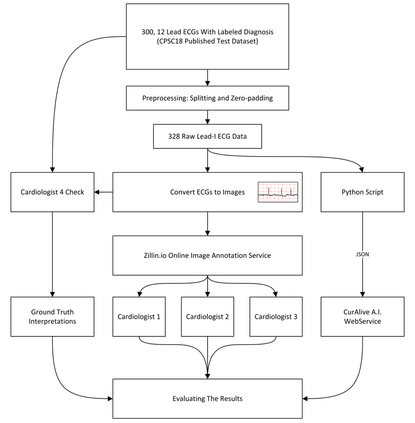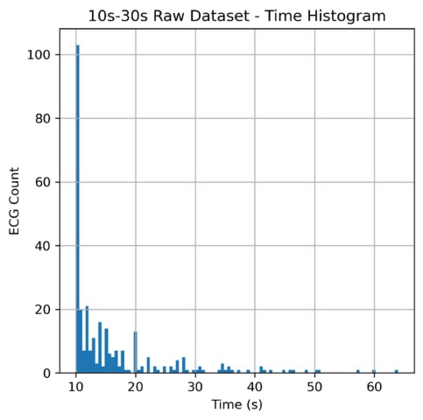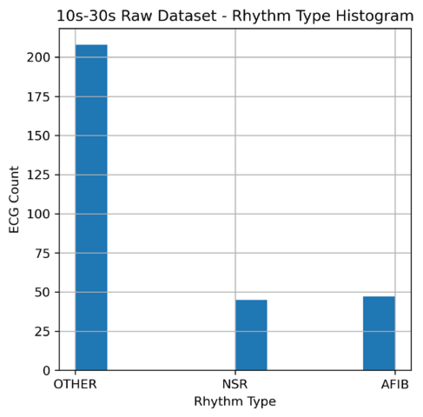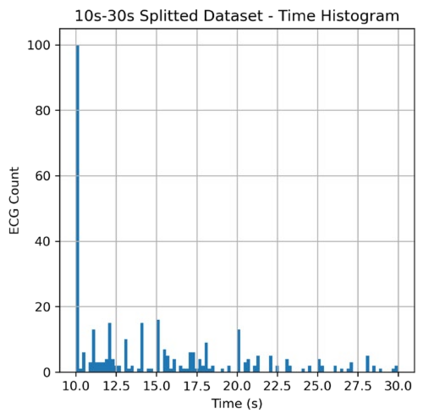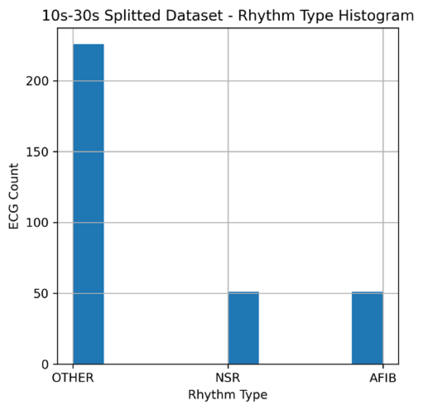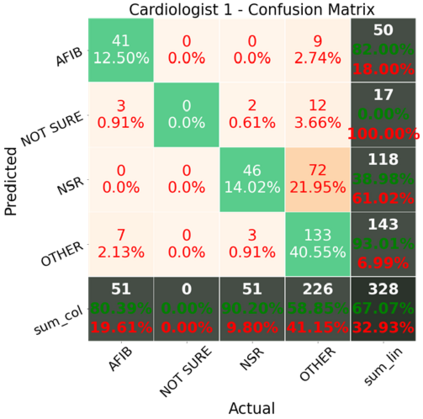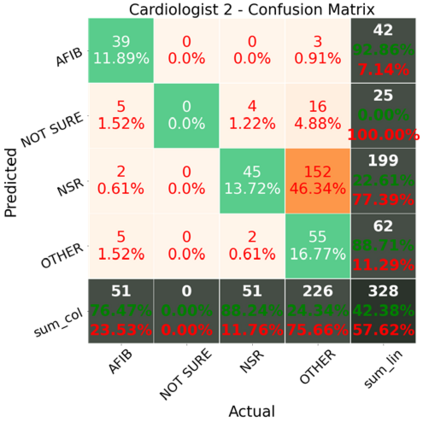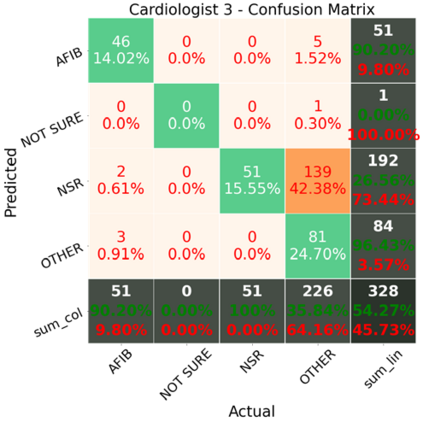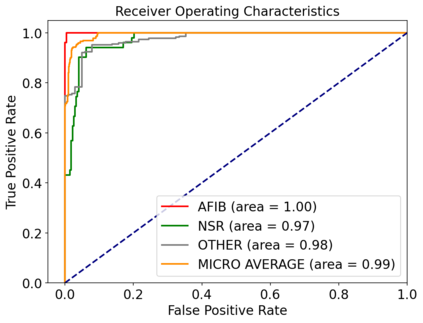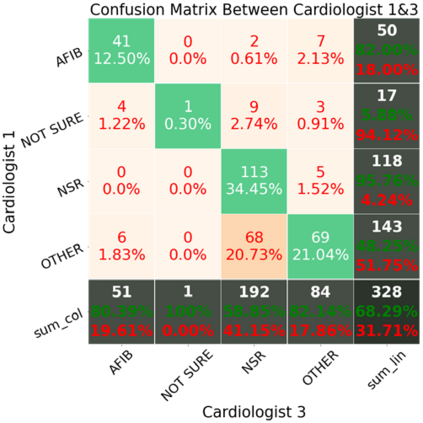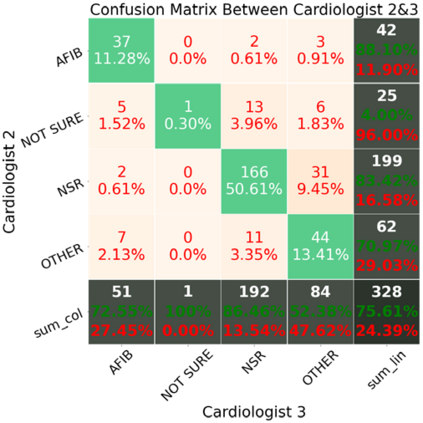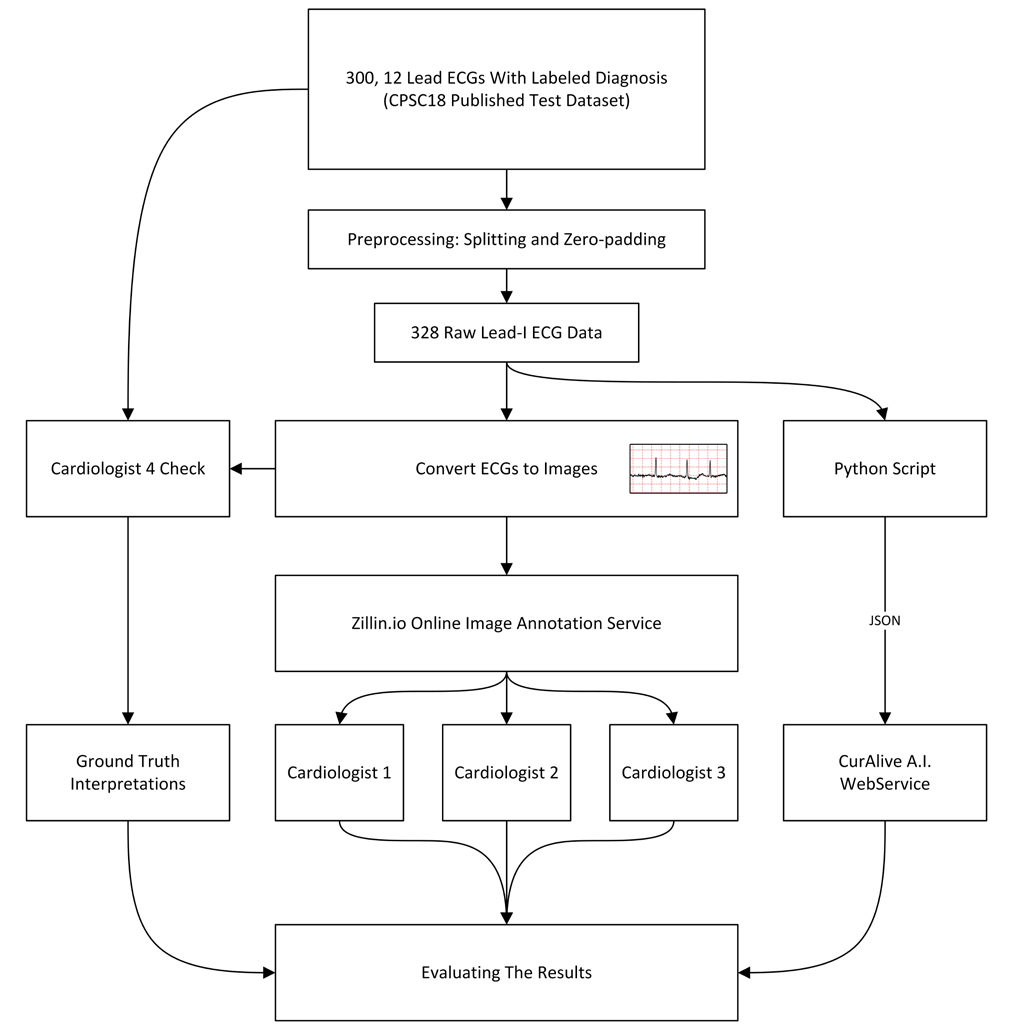Electrocardiogram recognition of cardiac arrhythmias is critical for cardiac abnormality diagnosis. Because of their strong prediction characteristics, artificial neural networks are the preferred method in medical diagnosis systems. This study presents a method to detect atrial fibrillation with lead-I ECGs using artificial intelligence. The aim of the study is to compare the accuracy of the diagnoses estimated by cardiologists and artificial intelligence over lead-I ECGs using 12-lead ECGs as references. To evaluate the performance of the proposed model, dataset were collected from China Physiological Signal Challenge 2018. In the study, diagnoses were examined in three groups as normal sinus rhythm, atrial fibrillation and OTHER. All rhythm and beat types except NSR and AFIB were labeled as OTHER super-class. OTHER contains First-degree atrioventricular blocks, Conduction disturbances, Left bundle branch block, Right bundle branch block, Premature atrial contraction, Premature ventricular contraction, ST-segment depression and ST-segment elevated type ECGs. CurAlive A.I. model which is using DenseNet as a CNN architecture and continuous wavelet transform as feature extraction method, showed a great performance on classifying ECGs from only lead-I compared to cardiologists. The AI model reached the weighted average precision, recall, F1-score and total accuracy 94.1%, 93.6%, 93.7% and 93.6% respectively, and the average of each of the three cardiologists has reached weighted average precision, recall, F1-score and total accuracy 82.2%, 54.6%, 57.5% and 54.6% respectively. This study showed that the proposed CNN model CurAlive, can be used to accurately diagnose AFIB, NSR, and OTHER rhythm using lead-I ECGs to accelerate the early detection of AFIB as a cardiologist assistant. It is also able to identify patients into different risk groups as part of remote patient monitoring systems.
翻译:57心电图对心脏心律失常的识别对于心脏异常诊断至关重要。 由于其强烈的预测特征, 人工神经网络是医学诊断系统中最喜欢使用的方法。 此研究提供了一种方法, 用来检测使用人工智能的铅- I ECG 与铅- I ECG 的神经纤维化。 研究的目的是比较心脏学家和人工智能对铅- I ECG 的诊断结果的准确性, 使用 12 铅 ECG 进行对照。 为了评价拟议模型的性能, 从中国生理信号挑战 2018 中收集数据集。 在研究中, 人工神经神经网络是医学诊断系统最常用的三组 。 54% 心脏- 心脏信号网络是正常的 54% ; 54% 心脏心脏- 心脏- 6 心脏- 2018 ; 在正常的三组中,除了 NSR 和 A. I 外, 所有的节律和 A. 正在分别将IFDENet 的 3 的精度 和 Oral 的精度 用于 IM IM AS AS 格式化 的内, 。

